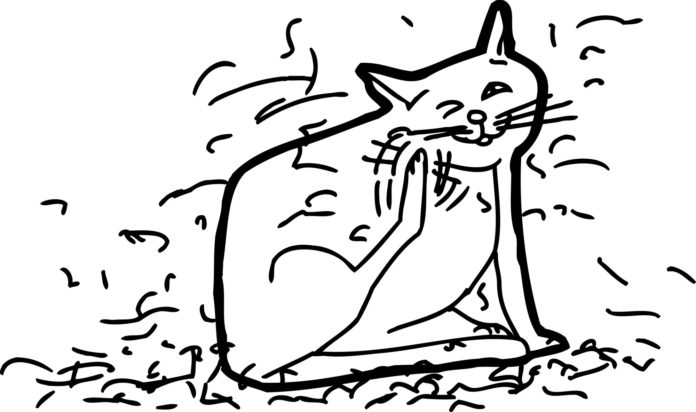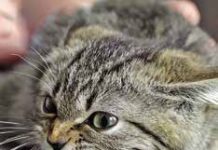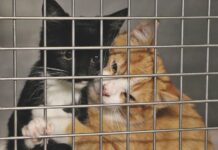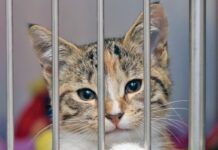theblackrhino | Deposit Photos

Shedding is a normal part of life for mammals—old hairs fall out, allowing new hair to grow in. “Animals shed year-round with typically two heavy periods in spring and fall—building up and getting rid of a winter coat,” says William Miller, VMD, DACVD, Dermatology Section Chief at the Cornell University School of Veterinary Medicine. During these times of the year, it may seem like there is more hair on the floor than on the cat.
But sometimes shedding and coat quality can be indicators of illness, stress, or other problems. Watch for changes in shedding cycles, coat quality and texture, and localized areas of hair loss.
“Normal shedding is a whole body event not restricted to one small area or a region of the body,” says Dr. Miller. “If you run a comb over the normally shedding cat’s body you collect hairs from all over the body and not just one area.Normal shedding does not leave bald spots or sparsely haired areas on the cat’s body.” Patches of very thin or missing hair are a cause for concern.
Changes in Shedding Cycles
“Seasonal shedding can be influenced by the local climate, whether the cat is strictly an indoor cat, and the owner’s lifestyle,” says Dr. Miller. “If the owner is a night owl in a home where the light bulbs approach the frequency of natural sunlight, the natural shedding pattern will be disrupted.”
Cats living in homes that don’t follow the natural daylight patterns of the seasons may not shed at the usual points in the year. This can explain atypical shedding patterns, especially if you have just switched to a more nocturnal lifestyle or moved to a house that is brighter throughout the evening and night.
Stress can cause excessive shedding. “Nervous animals will shed more than your happy-go-lucky cat,” says Dr. Miller. Cats are notorious for shedding copious amounts of hair in veterinary exam rooms and may shed during other stressful events such as thunderstorms, travel, or after a move. While this hair loss does indicate that your cat is anxious, it is not problematic as long as it stops once your cat is comfortable again.
Changes in Coat Quality
Be wary if your cat’s normally shiny, silky coat looks dull or greasy. “If the apparent normal shedding leaves the cat with a horrible coat then it’s not normal shedding but an indication of internal or external disease,” Dr. Miller warns. Hormonal changes and/or nutritional imbalances can be the cause.
Senior cats may stop grooming because they don’t feel well due to illness or because arthritis prevents them from bending easily. Obesity will impede normal grooming. If not addressed, this ungroomed hair can form mats that become painful. Mats should be clipped, and the cat should be groomed daily or kept shaved to prevent more mats from forming while any underlying issues are being treated. Once the cat begins to feel better, she usually resumes normal grooming behaviors.
Diet and Coat Health
What you feed your cat matters, but it doesn’t have to be pricey food. “In my opinion, a healthy cat eating a good quality food (most grocery-store foods are good quality) needs no supplements because the food has all the ingredients in the correct proportions,” says Dr. Miller.”The cat’s fatty acid metabolism is special so fat content is important.Fortunately, those ingredients are inexpensive, so they rarely are too low.When one wanders off into the very cheap foods or the bizarre exotic ones that may or may not be true.”
Supplementation can be necessary if your cat has a health condition or requires a special diet. Dr. Miller says,”If the cat has allergies, supplementation with omega-3 and omega-6 fatty acid supplements can be beneficial.”




